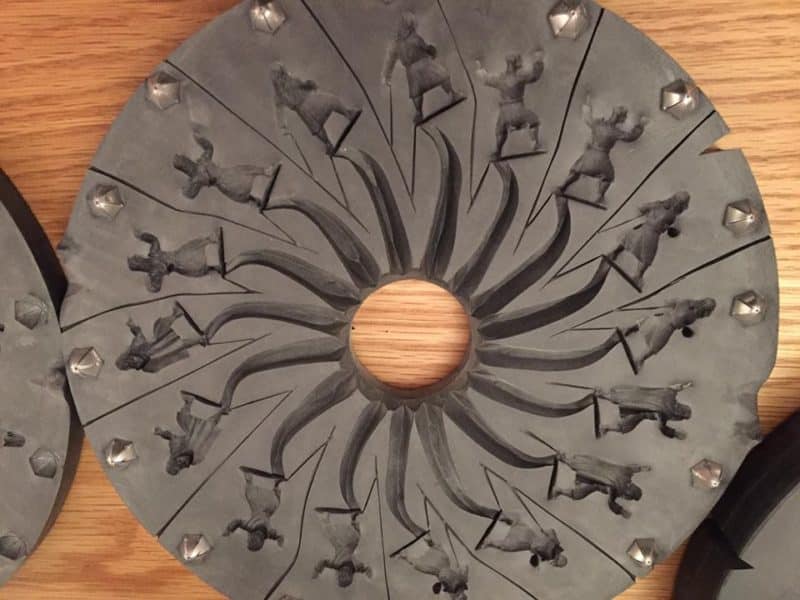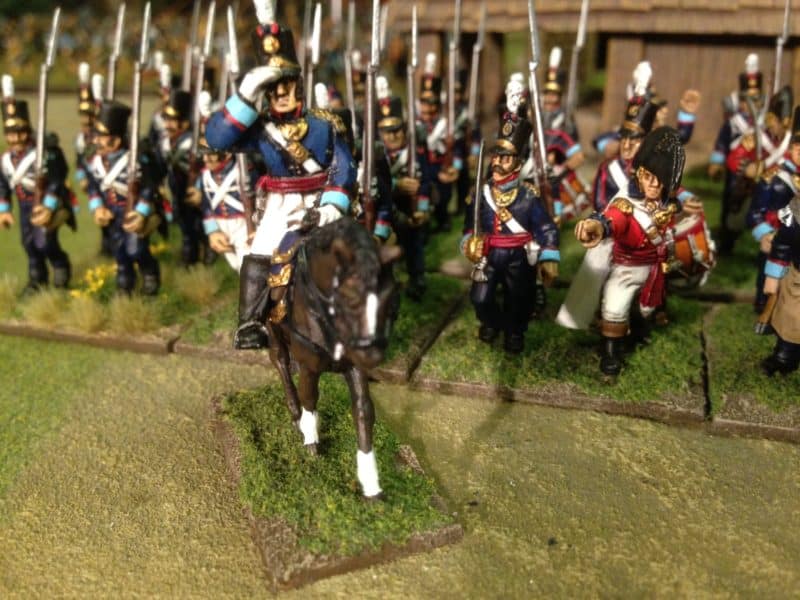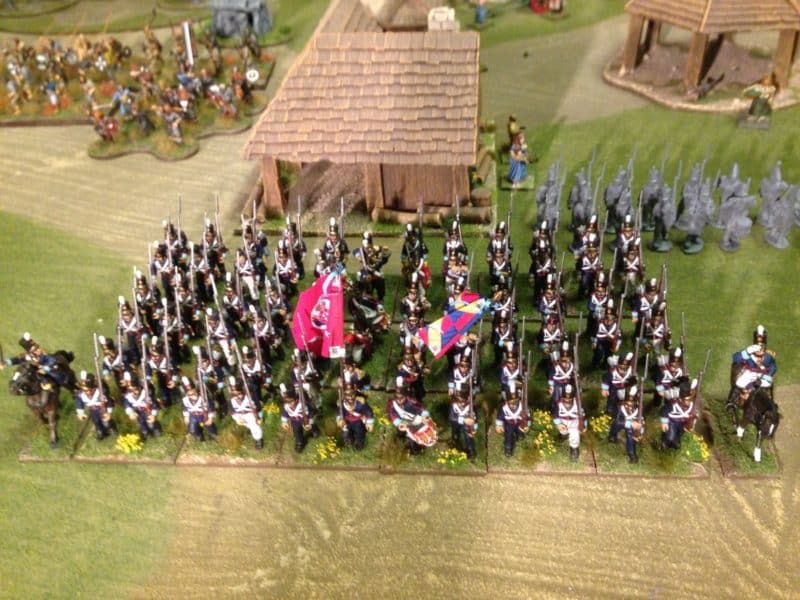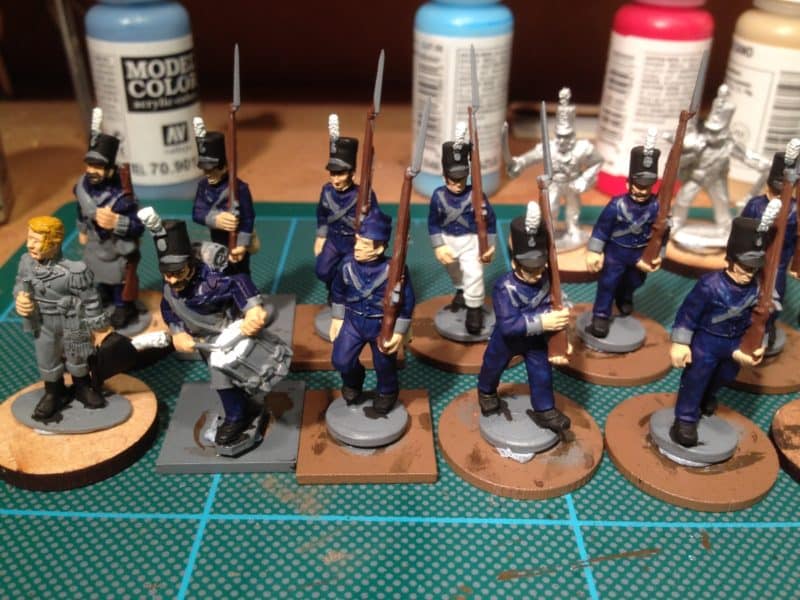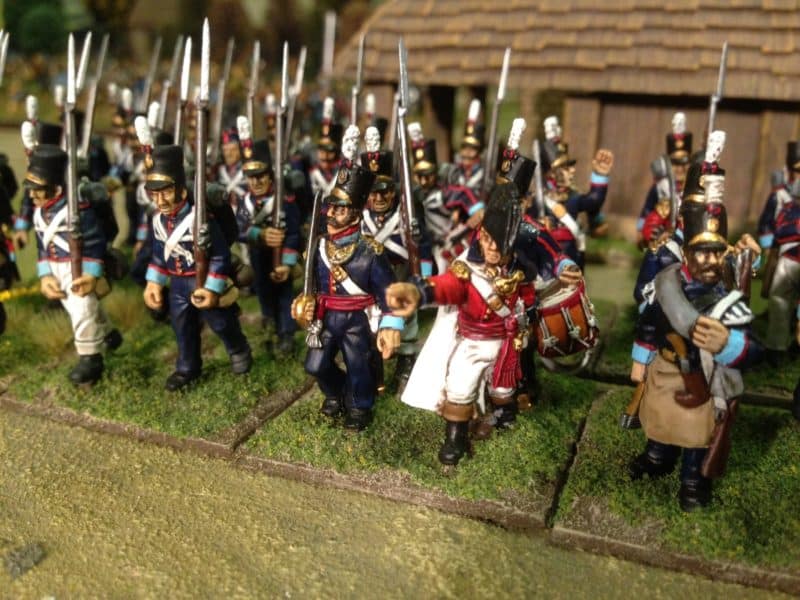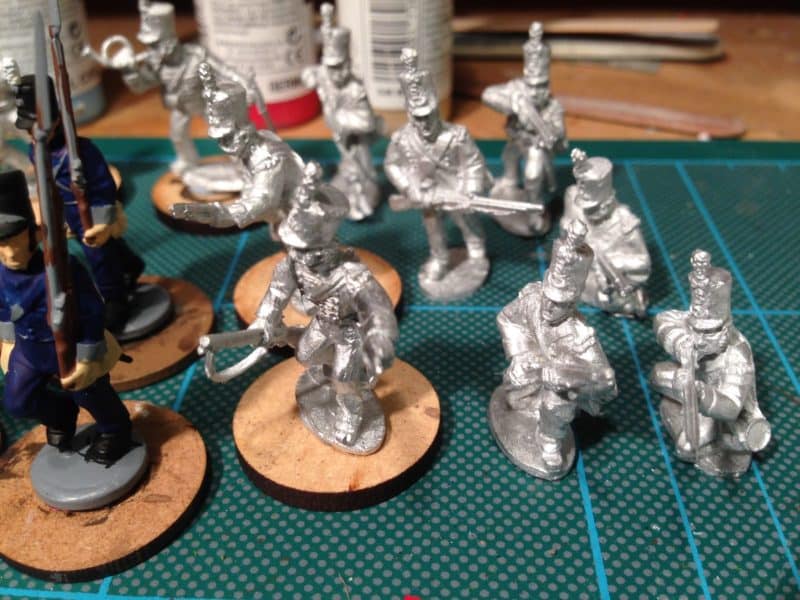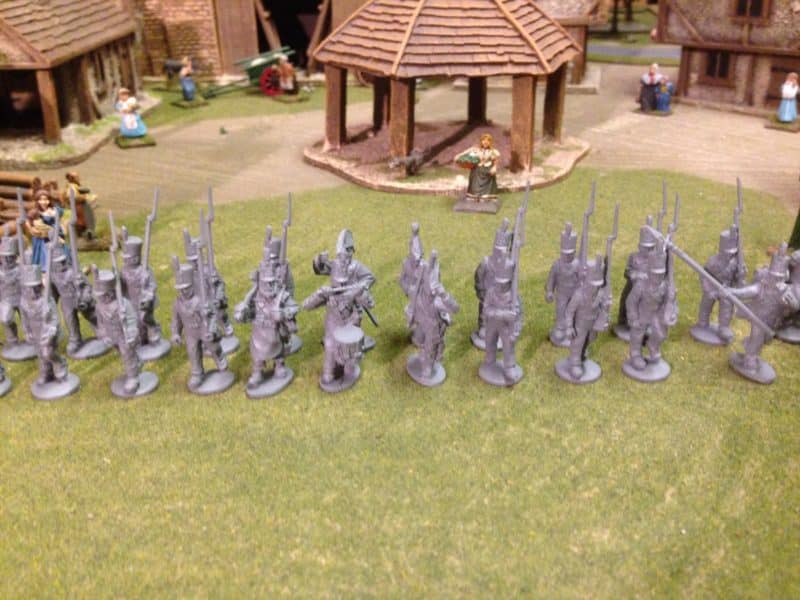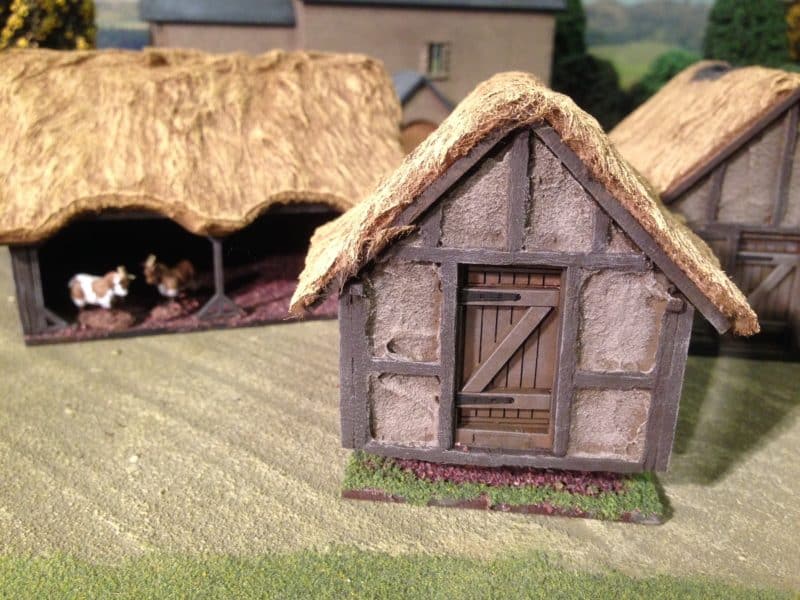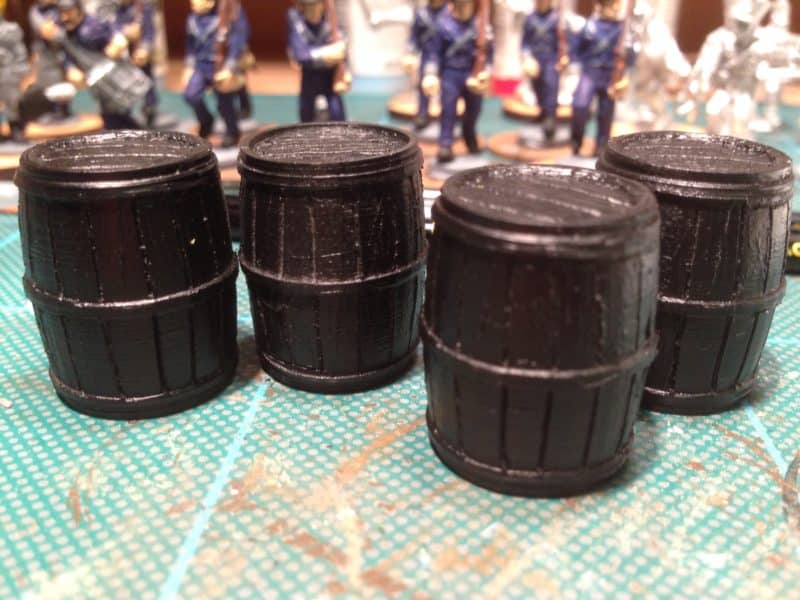The joy of wargaming with friends is that every now and then, someone comes up with an idea that you, yourself would have just dismissed as crazy. So when Duncan said that he wanted to do a Napoleonic version of Saga, I was a bit sceptical that it would work. There are already enough Napoleonic Skirmish games out there, why do another?
But before we get to that, perhaps a bit of back ground. I’m lucky enough to be wargaming each week with a group of great group of friends at a local pub. I suppose that we are a club, there’s no subs or secretary or chairman or anything like that. We just meet at the pub for a meal and then get on with the gaming. The pub, the White Hart, very kindly allows us to use their function room for free, so long as we have a meal & a couple of drinks. A great arrangement for both parties!
The nearest thing to formality is the gathering at the end of the evening when we have a brief discussion about who’s playing what next week. This spirit of informality also extends to the way that we play our games. We are happy to tinker with rules sets so that they play to our liking and are more interested in enjoying the game than worrying too much about the rules. ( we have our moments though…)

An Intro game of Black Powder for a new member at the club
We tend to play a lot of Black powder, all of us having large Napoleonic armies built over the last few years. However, we also alternate with other rules sets and tend to use skirmish rules sets to explore new periods or perhaps give us an excuse to paint yet more models! At the moment, one of the rules sets that we are trying out is ‘The Men Who Would be Kings’. Its’s written by Dan Mersey and based on the ‘Lion Rampant’ rules engine. So far we have had a good deal of fun with these rules – here’s the latest game at the club.
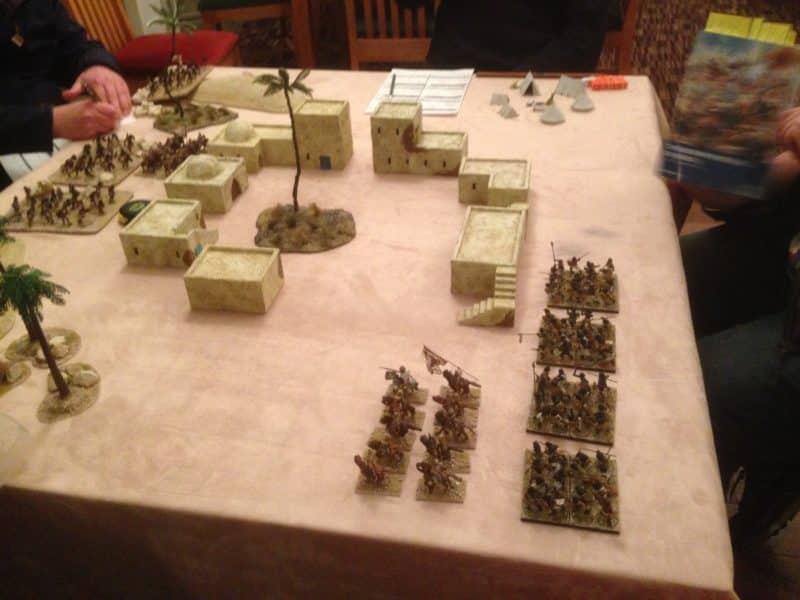
This weeks set up for the Men Who Would be Kings
And so back to Napoleonic Saga. I asked Duncan why go down this route when there were already so many good skirmish games out there, Sharpe Practice and Muskets and Tomahawks to name but two. The answer was that he wanted to create some rules for the ‘small revolutionary wars’ that took place as part of the wider Napoleonic conflict but give them their own flavour. A skirmish type game would give people the chance to build smaller armies but the Saga boards idea would be a way of introducing unique qualities or ‘flavour’ to the particular protagonists.
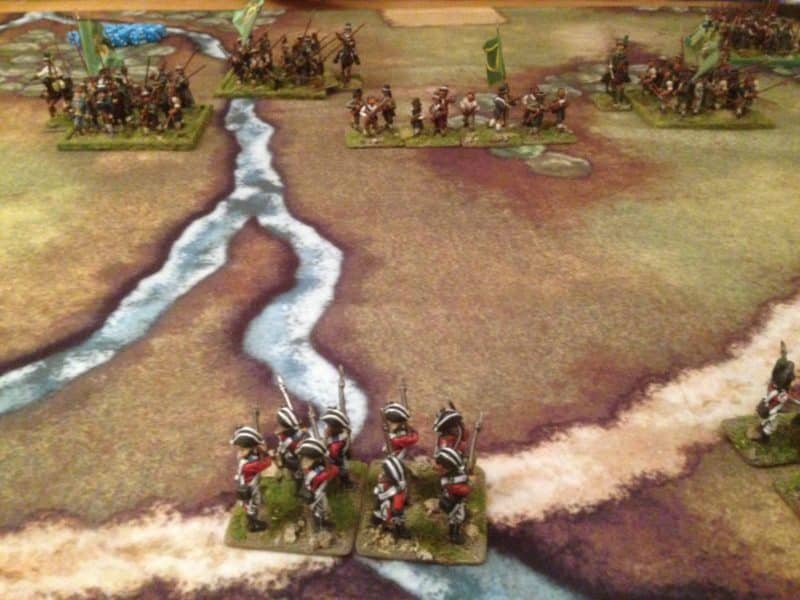
A British force observes the Irish Rebels as they advance!
The Irish uprising of 1798 being a case in point. Not everyone would want to build a huge Irish Army or British Militia and refight the Battle of Castle Bar or even the Battle of Arklow , as featured in Wargames Illustrated issue 319, now sadly out of print. However, a smaller game would allow scope to build and paint a few typical units and refight some of the smaller skirmishes or simply enjoy gaming with the particular units of that conflict.
With this in mind Duncan put together a set of embryonic rules. Now these rules will possibly feature in a future Wargames Illustrated release, so I can only give you a flavour of the game here. As with Saga, you will use your points to purchase a small mixed force of Regulars (Hearth guard) Militia (warriors) or ‘Local rebels’ and support units (Levy) and these in turn will generate the Saga dice for your army. The Commanders (warlords) have a slightly different function as they will not get so involved in the actual fighting as a Viking warlord might! They are key to keeping your force moving, rallying, if fatigued and of course encouraging them in battle!
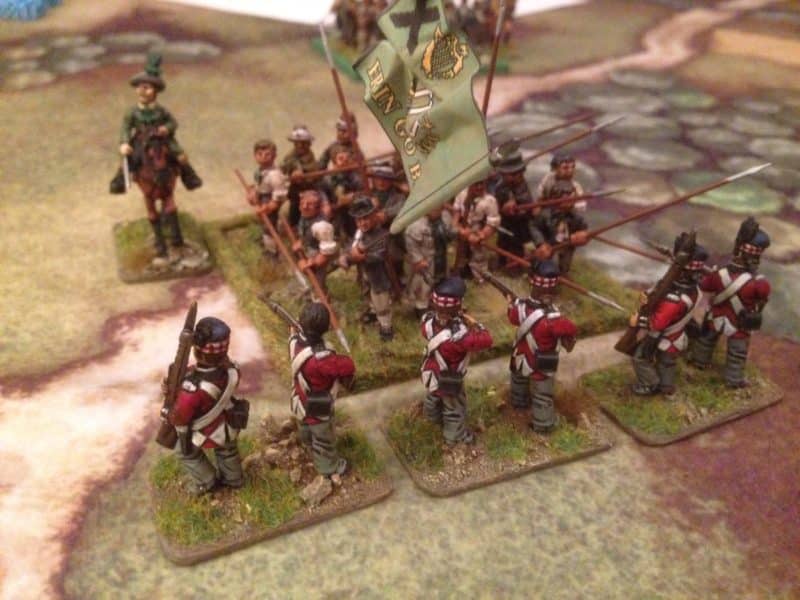
Contact! The Irish Pikes Block charges the British line.
As usual with Saga, the limited number of Saga dice mean that you have to decide which units that you will activate and whether you will use any special abilities on the Saga board. The Saga boards for our game were still not quite complete but I can tell you that the abilities are fairly straight forward and down to earth, giving your units an edge in a particular aspect of combat. What is clever is that they are based on specific quotes or events from the Irish uprising.

Dragoons impetuously charge a Pike block!
Movement and shooting is very similar to the original Saga rules set, with fixed Long, Medium, Short and Very Short distances being used for both movement and to modify firing effectiveness. Fatigue also played it’s part as a measure of a units morale. The game played surprisingly well for a first outing and copious notes were made for the next play test. It was the Irish rebels that won the day – their more numerous pikemen overrunning the Government troops. Duncan has much work to do before bringing a full set to publication but the good news is that if it works with the Irish, the game can be adapted to other areas with new battle boards for say, the Chouans and Vendee rebellion or may be at last I will get my Caribbean game…
If you are interested in purchasing any of the rules sets mentioned above, Arcane Scenery has a comprehensive selection in our shop here:
Rules for Wargaming
We currently post free to most worldwide locations.



